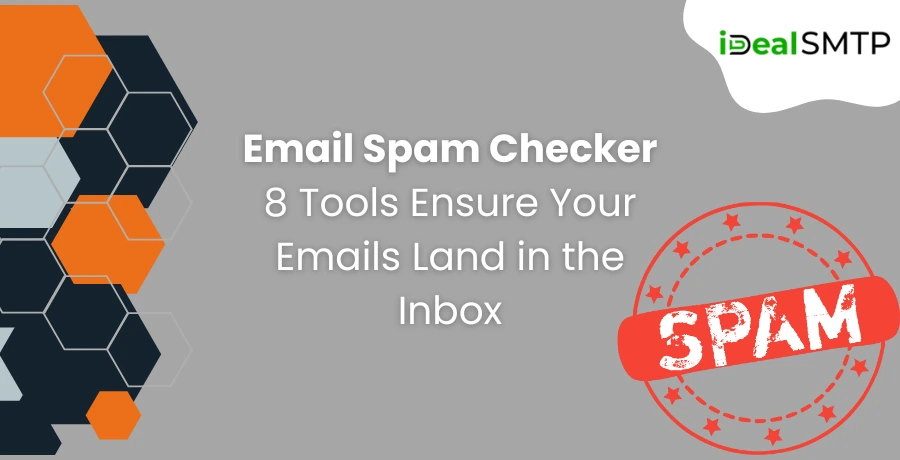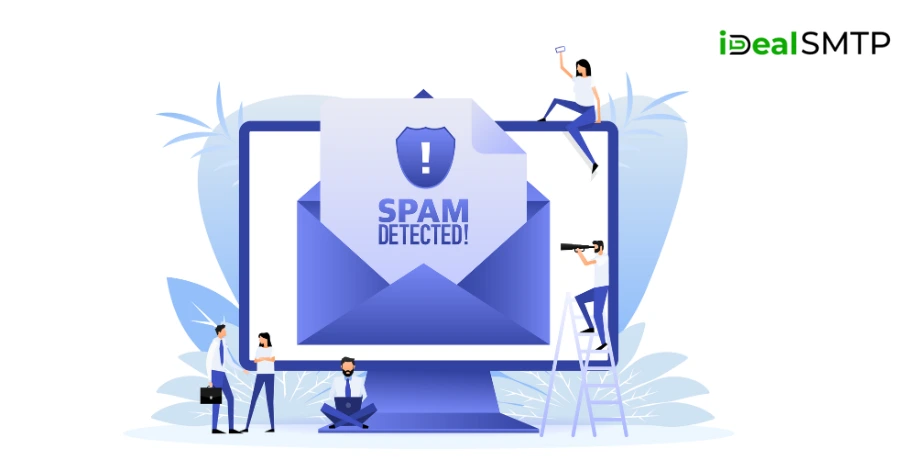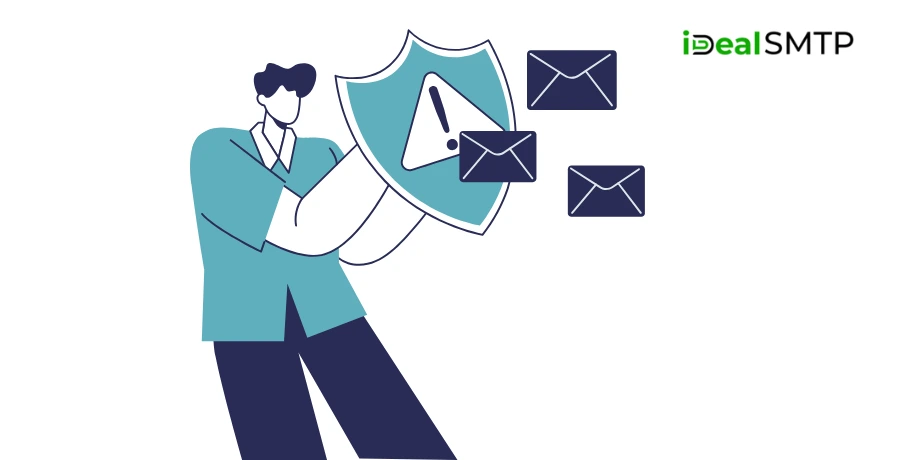Email marketing remains one of the top effective ways that help businesses reach out its set audiences. However, regardless of how brilliant your email marketing campaigns are, they are virtually useless when they land, in the spam folder. This is why an email spam checker is more useful than necessary.

In this guide, we will learn about email spam checks, how to use tools to check for spam email-related problems, and how to keep an email server healthy.
Table of Contents
Pricing
| Trail Plan | Standard Plan | Premium Plan | Professional Plan |
| $50 | $145 | $185 | $225 |
| Sending Limit | Sending Limit | Sending Limit | Sending Limit |
| 1000 Emails/Hour | 1500 Emails/Hour | 3000 Emails/Hour | 5000 Emails/Hour |
Understanding Email Spam
Spam mails are widely received unwanted messages delivered in large quantities in most instances, for advertising. Apart from filling up a recipient’s inbox, they not only can harm the sender’s reputation if improperly marked. Spam email checker is a tool that scans through your emails to determine their conformity to measures against spam as well as highly recommended measures.
Why You Need an Email Spam Checker
The email ecosystem utilizes large-size algorithms to determine spam. These filters consider multiple factors, including:
- Content Quality- Any message containing numerous promo keywords or spam links is likely to be marked.
- Sender Reputation- This depends on your email server sending history of emails.
- Authentication Records- SPF, DKIM, and DMARC records are proper tools for the validation of your identity as the actual sender.
There are several ways email spam checker assists you in identifying problems with an email before hitting the send button and thus get better deliverability and higher engagement rates.
Features of a Good Email Spam Checker
A reliable email spam checker should offer:
- Content Analysis- Searches for indicators of spam, such as a list of keywords, the presence of links, and improper formatting of the page.
- Blacklist Monitoring- Helps maintain that your email server IP or domain is not considered as spam.
- Authentication Verification- You can confirm your SPF, DKIM, and DMARC records.
- Email Previews- Helps you see your email as clients see it, in a variety of inboxes.
- Spam Score Calculation- This gives a score that predetermines the chance of your email being delivered to the spam folder.
Popular Email Spam Checkers
Here are some tools to consider:

1. Mail Tester
Mail Tester is a very popular service to check the deliverability of e-mail messages. It gives spam scores depending on body and content, authentication, and setup, meaning it is for fast and interactive decision-making.
Key Features:
- Offers a score of spam out of 10 dependent on the number of spam triggers.
- It checks the settings of SPF, DKIM, and DMARC.
- Tests blacklist status and server reputation all in one place.
Why Use It:
That is why it is free and intuitive, which will be helpful both for beginners and professionals in the field of email marketing.
2. GlockApps
Testing and observing email inbox placement is made easier using GlockApps, which can be viewed as an all-in-one tool.
Key Features:
- Tracks where your email lands: inbox, spam, or promotions.
- A system for evaluating the sender’s reputation and the health of the sender’s IP addresses.
- Has advanced information regarding SPF, DKIM, and DMARC and best practices.
Why Use It:
It is ideal for marketers because it helps to increase campaign effectiveness based on deliverability problems at different providers.
3. Postmark Spam Check
Postmark Spam Check tests your email for spam in several ways, utilizing SpamAssassin – an open-source email filtering system.
Key Features:
- Detects content-based spam in the mail depending on their context.
- It provides some recommendations for increasing the relevance and quality of corresponding emails.
- They are free to use for making very basic spam score assessments.
Why Use It:
A knowledge asset on gauging the spam score of an email to identify spammy content within emails.
4. Litmus Spam Testing
At Litmus, we have a great spam testing feature as one of the most integral parts of our email optimization tools, for improved email performance.
Key Features:
- Check your email for compatibility with the principal anti-spam programs.
- Emails Sender REPUTATION analyzer and BLACKLIST STATUS checker.
- Validates content formatting in multiple mail clients and different devices.
Why Use It:
It is suitable for mass email advertising and consistency in the performance is appropriate.
5. SendForensics
The unit is dedicated to deliverability analysis, and it provides deeper levels of information to help your email programs.
Key Features:
- Deliverability assessment on a deeper level.
- Handles the monitoring of content quality and the sender’s credibility.
- Targeted validation before sending a campaign and estimating the message deliverability rate.
Why Use It:
Another excellent resource for email marketers with sections for detailed analysis and checking before the campaign is sent out.
6. Email on Acid
Many potential clients turn to Email on Acid for rendering and spam tests to make sure messages appear nice and do not end up in spam.
Key Features:
- Submits the content of the email to various spam filters.
- The client verifies SPF, DKIM, and DMARC records.
- Scans subject lines and body of messages searching for spam indicators.
Why Use It:
It is perfect for marketers who need their email newsletters service to look fantastic and be pixel-perfect at the same time.
7. SpamAssassin
The current most popular spam filtering system among developers and ISPs is SpamAssassin which is also a freely available software product.
Key Features:
- It gives out spam scores about the assigned spam rules.
- Identifies widespread spam characteristics in headers and textual messages of electronic mail.
- Free and highly configurable.
Why Use It:
It is the preferred option for the technical audience that requires precise control of the spam filter.
8. IsNotSpam
IsNotSpam is a fast and clear utility for email deliverability and email authentication parameter checking.
Key Features:
- We look at the configuration of SPF, DKIM, and DMARC.
- Gives an understanding of what the headers of the messages are and other problems with the format of the mail.
- Incorporate quickly and easily to ensure deliverability if you’re not using a third party for these preliminary evaluations.
Why Use It:
Easy to use tool for conducting small tests to check whether your email is not considered spam.
Steps to Check Spam Email Issues
Analyze Your Email Content
- Avoid trigger words like “Free,” “Act Now,” or “Guaranteed.”
- Use a good text-to-image ratio and ensure all images have alt text.
Authenticate Your Email Server
- Set up SPF (Sender Policy Framework) to authorize servers that can send emails on your behalf.
- Implement DKIM (DomainKeys Identified Mail) to validate email integrity.
- Enable DMARC (Domain-based Message Authentication, Reporting, and Conformance) to monitor email authentication.
Test Your Emails
- Use an email spam checker tool to evaluate your email’s spam score.
- Check for domain and IP blacklistings using tools like MXToolbox.
Monitor Sender Reputation
- Use services like Google Postmaster Tools to track your sender’s reputation.
- Avoid high bounce rates by maintaining a clean email list.
Ensure Compliance with Anti-Spam Laws
- Include an easy-to-find unsubscribe link.
- Identify yourself and avoid misleading subject lines.
Best Practices for Maintaining a Healthy Email Server
Your email server operates as one of the key factors that would determine the deliverability of your emails. Follow these tips to optimize its performance:

1. Regularly Update Authentication Records
Invest some time in checking that your SPF, DKIM, and DMARC records are optimal and all set to the latest standards.
2. Monitor Blacklist Status
Scan through emails marked spam and look if your server’s IP or domain appears in the blacklist. One helpful instrument in this aspect is MXToolbox.
3. Warm-Up New Email Servers
When an individual or a company starts a new email server they should do it slowly so as not to be marked as spam.
4. Use a Reputable Email Hosting Provider
Opt for well-protected, pro-anti-spam, and well-equipped service providers.
5. Segment Your Email List
Sending material explicable to certain groups reduces complaints and the results reveal high interactions.
The Role of Email Spam Checkers in Compliance
Anti-spam laws, such as CAN-SPAM in the US and GDPR in the EU, impose strict guidelines on email marketing. An email spam checker ensures compliance by helping you:
- Avoid misleading subject lines.
- Provide clear opt-out mechanisms.
- Protect recipient data.
Advanced Techniques for Checking Spam Email Issues
For businesses with high email volumes, advanced practices include:
Implementing Feedback Loops
Feedback loops allow you to monitor spam complaints and take corrective actions promptly.
Using AI-Powered Tools
AI tools can predict spam triggers and optimize email campaigns in real time.
Server-Side Spam Filtering
Tools like SpamAssassin can be integrated directly into your email server to filter outgoing emails.
Customizing Spam Filters
Tailor spam filters to suit your organization’s specific needs and audience behaviors.
Conclusion
In the cut-throat world of email marketing improving delivery rates of your messages that go straight to the inbox is vital. It’s not about never getting to the spam folder it is about fine-tuning your email campaigns to achieve better results. When it comes to content, email server authentication, and compliance, you can easily secure a high sender reputation that would help you attain your email marketing objectives.
Spending a few hours or dollars today to try out tools that help deal with spam emails will benefit in the future. Ensure that spam email checkers are part of your framework when it comes to email marketing, and your campaigns will explode.







